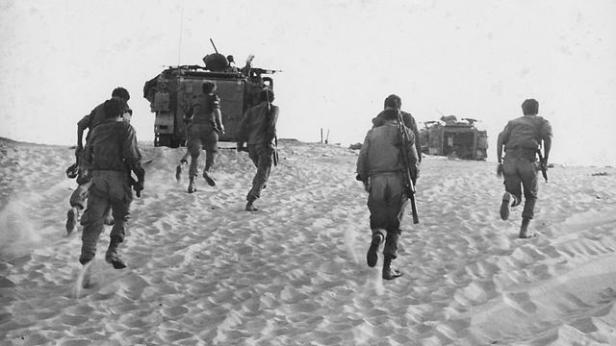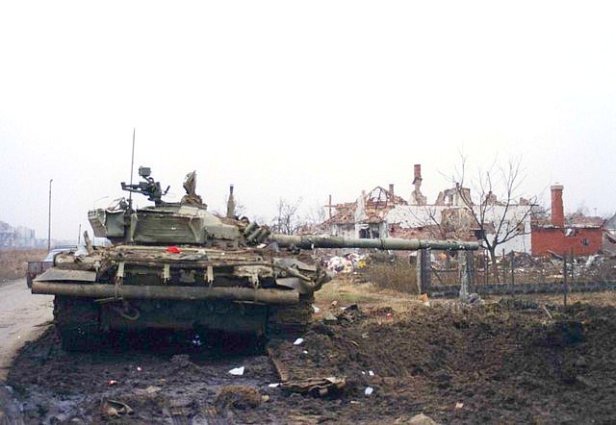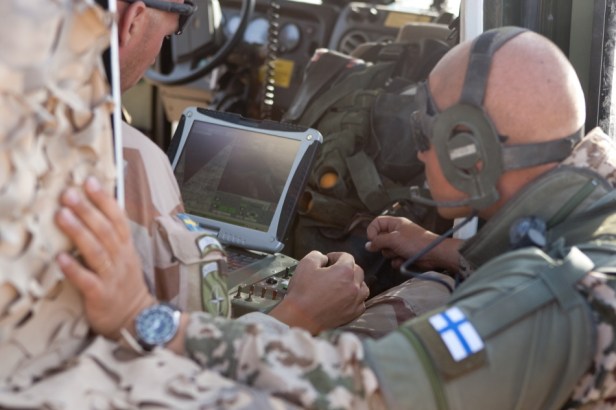A tweet recently caught my attention.
https://twitter.com/austingcommons/status/1261746208281780224
The basic premise is sound and straightforward, and it is hard to argue with. It also quickly spawned a discussion about which other operations should be included, with some cases more well-known than others.
However, while I personally find the Falklands War very interesting, and while it certainly provide several universal lessons to any student of modern wars, not even an amphibious enthusiast such as myself can deny that from a Finnish point of view (or Swedish for that matter) it most likely isn’t the most relevant conflict to study. Which begs the question, which conflicts are the ones most relevant for an understanding how a war involving Finland would play out?
Having given the question some thought, I have come up with the following list of conflicts I would recommend for study. This is far from an attempt at anything resembling the objective truth on this issue, but rather at providing some food for thought. So, without further ado, here they are:
The Yom Kippur War (1973)
The Six-Day War of 1967 is often portrayed as the pinnacle of Israeli warfighting, and on the surface it’s hard to disagree – beating numerous enemies on several fronts in under a week is impressive, and the more so when looking at the prepared positions and often numerical and/or qualitative superiority of the defenders.
However, the Yom Kippur War on the other hand shows the Israeli way of war when things does not go according to plan. The war kicked off with a two-front assault on the Israelis who were caught off-guard with their reserves unmobilised, leading to a race for the Israelis to bring the brunt of their largely reservist-based Army to the frontlines before the Egyptian and Syrians had advanced too far.

Surprise is one thing. Being caught completely off-guard when it comes to enemy tactics and doctrines is another issue, and one that would cost the Israelis dearly over the coming days. In one of my all-time favourite quotes, Abraham Rabinovich in his excellent overview of the war (simply named “The Yom Kippur War”) wryly notes that:
The Arabs were now doing a lot of things the Israelis had not expected.
The best example is likely that the IDF hadn’t bothered to adress the fact that the Arab armies had superior night-fighting equipment, because based on earlier conflicts it was assumed that they wouldn’t be interested in night-time operations. The same tendency to overlook glaring issues was the reliance on air superiority to offset the lack of artillery, and severely underestimating the influence of modern anti-tank weapons on the battlefield (especially considering how tank-heavy the Israeli Army was).
In the end, however, the IDF proved why it is generally regarded as one of the premier fighting forces in the world. The higher quality of the Israeli soldiers on the individual and small-unit levels started to be felt on the battlefield, and the adaptability and daring ‘can do’-attitude that characterised the IDF throughout the organisation eventually turned the tide. The decision to not try and simply push the two Egyptian armies back over the Suez Canal, but instead strike in the seam between them, cross the canal over to the African side, and completely encircle the Egyptian Third Army (while at the same time having armoured units destroy the SAM-batteries that had been such an issue for the Israeli Air Force) remains among the most impressive post-war operations conducted by any fighting force. It was also marked by the kind of daring-bordering-on-foolhardy planning and stretching-your-luck-almost-(but only almost)-to-the-breaking-point that really spectacular military successes tend to exhibit.

One of the key features of the IDF in the Yom Kippur War was the way things just got done. When the war broke out, the command post of Northern Command responsible for the Syrian Front was lacking its commander, his deputy, chief of staff, and the division commanders. Technically that meant that one of the two brigade commanders, Col. Ben-Shoham of the 188th Armoured, was in charge. However, as he was at the front, busy commanding his brigade, the Northern Command operations officer, Lt.Col. Uri Simhoni, figured that he was the one with the best situational picture and the resources to lead the overall battle. As a result, he took charge of what was a command position reserved for a major general, and made the crucial decisions in the early hours of the war that came to shape the fighting on the Syrian front until the ceasefire. This included the decision to commit all reserves to the front from the outset to stop the breakthrough attempts, and identifying the northern flank as the more vulnerable area. To this day it is argued if the decisions were correct, but the notable thing here is that the decisions were made in a position were many other armies would have been stuck waiting without leadership.
The lessons of the conflict include the importance of the speed of decision-making, buying time to get the reserves mobilised, getting the lessons learned at the front transferred to fresh units, and the importance of not underestimating the enemy. The experiences of the war is still reflected in Israeli doctrine to this day, and the reasons behind many of the quirks of the IDF and its equipment is found in the conflict (the most obvious example being the design of the Merkava main battle tank and how it differs from other contemporary designs).
As is often the case, while you can learn from success, perhaps even more can be learned from failure. For the hypothetical “what is the one conflict to study”, I would recommend the Yom Kippur War due to its focus on facing a numerically superior (and partly better equipped) enemy, buying time to mobilise, adapting to the circumstances, the focus on mission command in the IDF, and the text-book examples of how friction affect all levels of fighting a war. However, there are a number of other conflicts that also can provide valuable lessons.
Operation Storm (1995)
When was the last time a large-scale ‘Blitzkrieg‘-style manoeuvre warfare operation was conducted in Europe? Depending on your definition, the answer may vary, but not a few historians have given it as the early days of August 1995. It was then that the young independent Croatian Army launched its last major offensive of the Croatian War of Independence, and completely overran SAO Krajina, the largest of the three regions that made up the self-proclaimed Republic of Serb Krajina.
Following the outbreak of the Croatian War of Independence the Serb regions had declared their own state (largely similar to the situation in neighbouring Bosnia and Herzegovina). As said, the largest of its three regions was the SAO Krajina, controlling large parts of central Croatia, including roughly a third of the border towards Bosnia and Herzegovina as well as isolating Dalmatia from the rest of Croatian territory.

The fiercest fighting of the Croatian War of Independence had taken place within a year of the conflict, with cities such as Vukovar and Dubrovnik seeing heavy fighting before the frontline largely stabilised itself. In 1994 however, the winds began to turn as the Croatian Army was starting to be able to harvest the benefits of years of trying to form the former national guard into an effective fighting force. At the same time the Washington Agreement between the Bosnian Republic of Bosnia and Herzegovina and the Croatian Republic of Herzeg-Bosnia made cooperation with anti-Serb forces across the Bosnian border possible for the Croatian government. The US was also shifting into a position of more openly providing support to the young Croat state, and the scene was slowly being set for a final showdown between the Croats and the Serb Krajina.
During early 1995 it was starting to become clear that the Serbian government in Belgrade was losing interest in supporting the Krajina, and the Croatian Army started moving to recapture lost territory. In May, the most isolated of the three SAO’s, that of Western Slavonia, was quickly overrun in Operation Flash. This was followed by the Croatian Army making smaller offensives to capture strategic staging positions for the all-out offensive against SAO Krajina in the summer, including a push in the south-east on the Bosnian side of the border (the creatively named Operation Summer ’95).
In early August it was then time for the big dance. Bosnian forces in the Bihać pocket tied up the few available Serbian reserves, while Croatian forces broke through weak sectors of the frontline, before continuing at speed deep into the rear of the Serbian region. The stronger Serb positions along the front were simply ignored, and were mopped up later after the strategic goals had been met. The offensive was supported by air strikes and raids behind the lines, with targets including Serbian command and control infrastructure.
The fighting was largely over in just four days, and the effects on the politics in the region were profound. The leadership of the last remaining SAO, SAO Eastern Slavonia, Baranja and Western Syrmia, in the northeastern parts of Croatia realised that the possibility of a Serbian authority in Croatia was largely dead, and would eventually sign the Erdut Agreement transferring the region back into Croatian hands in 1998. The capture of the North-Western corner of the Croatian-Bosnian border also meant that the long siege of Bihać ended, which in turn had a significant effect on the outcome of the Bosnian War. The Serbian population fleeing the Croatian offensive (something that was investigated by the ICJ) also had a significant effect on the internal power balance of independent Croatia.
The Russo-Georgian War (2008)
Studying Russia, really the only potential aggressor in any conflict directly involving Finland, the performance of Russian and Russia-associated units in Ukraine and Syria naturally gets much of the attention. However, there is a strong case to be made that with the exception of equipment performance (a field were several important changes have taken place in the last twelve years) the war in August of 2008 will in fact provide a better baseline from where to begin studies of the modern Russian art of war.

Crucially, the semi-covert nature of the Russian invasion of Ukraine means that a number of high-end features are curtailed, such as the Russian air force and large-scale mechanised units. At the same time, while the Russian invasion of Georgia largely took place before the implementation of the significant reforms of the Russian armed forces, the reforms were heavily influenced by the experiences. Needless to say, when looking at where the Russian armed forces are today and where they strive to be tomorrow, it is of value to look at where they got those ideas in the first place (not unlike the Israeli experience of the Yom Kippur War).
The relative lack of English-language source material and being overtaken by the events in Ukraine and the Middle East has largely left the 2008 war as something of a niche field of study compared to the more recent conflicts. Still, in many ways it is a better representation of the kind of confrontation that is the worst-case scenario for scenario planners around the Baltic Sea.
The Continuation War (1941-1944)
Finland remains Finland, and while much has changed, the experiences during the Second World War still offer many valuable lessons. Of the different parts of the war, the Continuation War is probably the one with most relevance to a modern study, both the Winter War and the Lapland War being serious outliers in many ways.
While much has changed the effects of terrain and climate, as well as the general geography as part of the wider region still remain largely relevant. At the same time, care should be taken not to draw too far reaching conclusions, as the general danger of planning for the last war remains well-known.
Finnish contribution to ISAF (2002-2014)
While Finland remains Finland, and Finnish soldiers remain Finnish soldiers, there’s no denying that Finnish society has seen significant changes in the last eight decades. As such, the combat experiences from Afghanistan can provide valuable input when it comes to identifying the particularities of Finnish soldiers in combat today.

While Finnish soldiers have taken part in complex peacekeeping operations for the better part of the post-war period, there’s no denying that the operations in Afghanistan are unique both in that they have taken place recently with the very equipment used by the Finnish Defence Forces today, and the fact that the operation eventually evolved into a war. A far cry from the kind of mechanised peer-level conflict that could affect Finland or the general Baltic Sea region, but a war nevertheless.
Significant lessons have been drawn from the conflict already, which have had effects both when it comes to equipment but also to less visible aspects of the FDF. Still, the Finnish ISAF contribution probably remains the premier place to study how modern Finnish units behave and perform in combat, acknowledging the fact that the people chosen for peacekeeping operations and the units they make up aren’t necessarily directly comparable to the average wartime unit and reservist.
Bonus round – Amphibious operations:
It is more difficult to find operations that correspond to the fighting that would take place in the Finnish archipelago, but there are two obvious examples that comes to mind:
The fighting around the Hanko peninsula in the summer of 1941 does provide valuable lessons, especially when it comes to the importance of mobility and securing local superiority, as well as the relative weakness of the defender compared to the attacker which is something that sets archipelagic island hopping apart from normal ground operations.
For the larger operational and strategic levels, the German Operation Albion during the First World War highlights the interplay between naval units, coastal defences, and ground units operating in the littorals, and also offer timely reminders about both the utilities and vulnerabilities of fleets operating in the confined waters of the Baltic Sea. A recent episode of the CIMSEC podcast ‘Sea Control’ is a good place to get a general view of what happened in what was one of the decisive battles of the Baltic Sea theatre in the First World War.


Interesting post. I wish I had the time to study the referred material, but I had to short circuit a bit and watched Binkov’s Battlegrounds instead. There are few sore points that the famous hand puppet have missed in Finnish capabilities, though I’m sure the same goes to Russian capabilities, too. I mean, what would a hand puppet know in the end 😉
Still, a interesting video to watch.
Dear E.A. Presley,
I watched the Binkov video too and I declared it as total rubbish from the Finnish point of view. There were very fundamental errors in video, for example Finnish forces were fighting only with their peace-time (training) organization without any actual war-time units mobilized. On the other hand, Russia concentratred all available units against Finland. I would be highly skeptical that neither of this would happen in real life. Binkov videos may be amusing to watch but they do not provide any realistic view to warfare.
Best regards,
Hannu Peltola
Captain in reserve